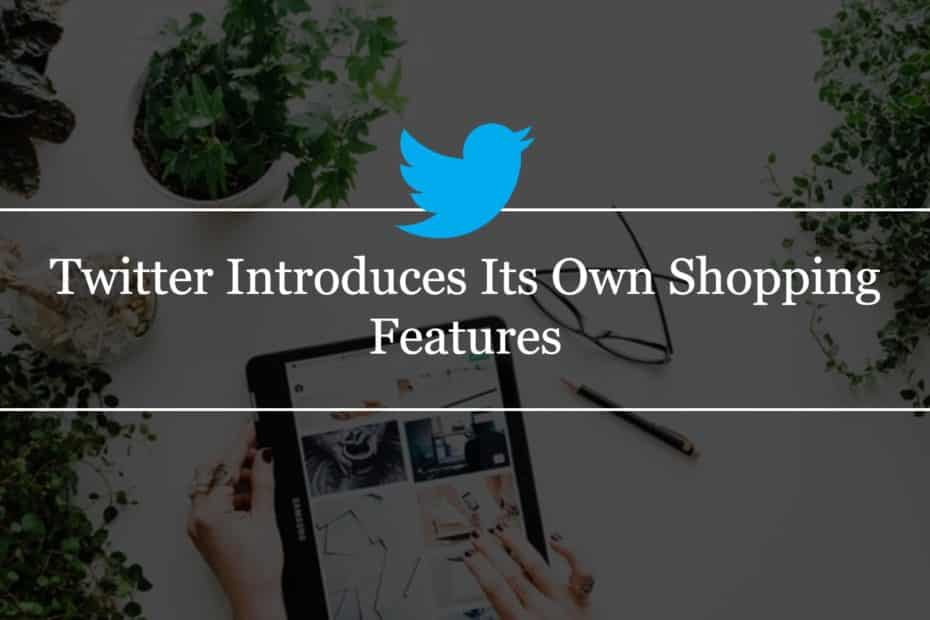Social media websites have changed almost everything in life. They have changed how people communicate, socialize, and behave. For instance, people who love reading the news now don’t rely on newspapers and News TV shows. They don’t even care if they miss them, unlike before. Why is that? Because they can learn about those things on Facebook or Twitter.
Another significant change that social media websites made is the shift in how businesses operate. Twitter, Instagram, Facebook, and even YouTube provided them with platforms they could use for advertising. Likewise, consumers use these networks to find a product they want to buy.

With the current state of the world, this is very nifty. The pandemic has forced physical stores to close down. According to the “IAB Brand Disruption 2021” report, the closings have tripled since the start of the pandemic. So, retailers had to find spaces where they could continue selling their products. Unsurprisingly, e-commerce b01oomed during the same year. It accounted for about 23% of all sales in 2020. Data showed that e-commerce grew between five and seven times faster than pre-COVID levels as a share of overall retail. Therefore, social media saw penetrating the e-commerce scene as the logical thing to do.
Over the last few months, major social media websites have exerted efforts to further make it easier for businesses to operate on their platforms. A common feature they introduced allowed people to buy and sell their products without leaving the platform. Twitter Followers enjoyed integrated e-commerce functions in their networks. Facebook, Instagram, and WhatsApp had “Shops” for a while now. Similarly, Pinterest and Snapchat have shoppable AR filters. Even TikTok has been testing its own in-app shops. Then recently, Twitter announced that it is now also embracing shopping. It makes Twitter the latest (and could be the last) social media giant to ride the wave.
Twitter Re-entering E-commerce
No one would find this news of Twitter introducing in-app shop buttons shocking. In fact, it was expected – considering other platforms have done it and are already on the polishing stage. Besides, Twitter had done it before. In the past, Twitter added a Buy Now button on Tweets, but that did not last long. Twitter stepped back to focus on other things.
Still, it cannot be denied that Twitter’s entrance to e-commerce is a notable event. Unlike Facebook or Instagram, Twitter has never really been a significant driver of commerce. Therefore, its arrival to this space says that social commerce is the inevitable future for all social media platforms.
Twitter’s Product Lead Bruce Falck previously released a statement. In the said statement, he clarified why Twitter is taking so long. its peers have already stepped into e-commerce, but at that time, it still hasn’t. Considering there had been a time when they tried it, it looked like an easy decision. But Falck says that Twitter considers sequencing very important. Moreover, they firmly believe that getting the performance ads business right will be a critical prerequisite to e-commerce.
Falck said that they would start with MAP, then move to clicks and conversions. The MAP mentioned stands for Mobile Application Performance system. Twitter has noticed a significant issue with the MAP system in 2019. It affected its targeting and data capacity. Hence, Twitter had to prioritize re-building it. Then, they had to refine it before the network could get back to e-commerce.
But with Twitter’s recent announcements, it seems like the company is now ready.
Twitter Announces Shop Module
“We are putting more energy into testing out the potential for shopping on Twitter,” says Bruce Falck.

Since March, the company has added a “Shop” button to the bottom of some tweets. The button does not appear only on ads, but it can also be found on organic Tweets.
Now, Twitter introduces a pilot of the Shopping Module. It is a dedicated e-commerce space atop a business’s profile. Once they have enabled it, they can display and showcase their products on a carousel. Twitter users will scroll through the carousel and click a product to see it closer or to purchase. They will do it without leaving Twitter – a common thing that social media websites are trying to do. It makes the transactions more streamlined, better than sending users to external links to complete the purchase.
This feature would allow them to see how shoppable profiles can use Twitter discussions to make products discoverable and ultimately sell them. Furthermore, it will enable Twitter to see how its “engaged, responsive and chatty audience reacts to products that are emotionally charged.” When they say this, Twitter is pertaining to products like a new jersey from the user’s favorite sports team. Likewise, Twitter would like to explore how users will react to products that leave a lasting impression – like a new skincare regimen. Overall, it will allow the company to see which shopping experiences people prefer on Twitter.
Twitter also announced that it would make a Merchants Advisory Board. It will consist of brands that have “established themselves as best-in-class examples of merchants on the platform. The company hopes that with their partnership, Twitter will address the needs of businesses of any size more quickly.

This pilot of Shop Modules is a step in better supporting shopping on Twitter. Also, it builds upon Twitter’s efforts around Professional Profiles. For those who are unfamiliar, Professional Profiles are something Twitter started earlier this year. It is a tool that allows anyone who uses Twitter for work to display information about their business on their profile. Twitter says that with modular components for Professional profiles, these people will have access to features that help drive engagement and business outcomes.
With all of these said, the future of shopping on Twitter looks bright. A repeat of what happened in 2017 is not likely to happen.
Twitter is not done yet. It is still in early explorations. So, users must stay tuned.
Facebook, Twitter, Instagram, and YouTube – these are only some of the numerous social media platforms we have today. They have changed the landscape. These networks have heavily influenced how people in the digital age live their lives. They change the way people socialize, spread news or awareness. Also, social media websites opened up new methods to earn money.

On YouTube, for instance, users can monetize their content once they unlock the YouTube Partner Program. Then on Facebook and Instagram, there are Shops where users can buy & sell products. Users can even do live streams and earn from them. Recently, Twitter also announced its Shopping Module and its future plans for shopping on the platform.
If you reflect on what’s happening in the world right now, you will see why social media websites focus heavily on monetization. People can’t or won’t come out for fear of contracting the coronavirus. Because of this, many businesses and shops were forced to close. Needless to say, many people needed new ways to generate income. This served as an eye-opener for social media websites.
One could say that social media platforms are spaces where “digital versions” of ourselves can exist. By the power of these platforms, we can see places far away from us and meet and befriend people who live in countries oceans away. Indeed, they can also grant their users the ability to earn. Thankfully, they realized that.
In recent news, Tumblr debuts Post+. This is Tumblr’s subscription service for creators on the platform. But even with all of the things said above, this feature is not widely received. Why could that be?
Tumblr’s Post+ Subscription Service
Just like any other social media platform, Tumblr needs to seek revenue. That will keep it afloat, meaning people can continue using Tumblr and enjoy its features. Since monetization on social media seems to be the boat to be in right now, Tumblr saw introducing its own method as the most logical thing to do.
In July 2021, Tumblr launched a beta test for Post+. In this subscription service, creators can put content behind a paywall. It doesn’t matter if it is an original artwork, a personal blog post, or another fanfic. All the creators have to do is check a box indicating the post is for paying subscribers only, and the content will be exclusive to them. The subscription price will start at $3.99 per month, with additional tiers at $5.99 and $9.99.
Tumblr is not the first to do this; it simply joined the fray. Twitter is rolling out Super Follows(basically allowing people to buy themselves Twitter followers), and Instagram is letting users create “exclusive stories” through a similar feature. Also, YouTube is introducing a new monetization tool.
Of course, Tumblr will take its cut – five percent to be exact – from the creators’ profits. While it is higher compared to Twitter’s three percent, it is significantly lower than YouTube’s 30% and Twitch’s 50%. So, it is a reasonable portion.
Tumblr has hand-picked the beta testers for the subscription service. However, a Tumblr spokesperson told TechCrunch that Post+ would not be reserved only for professionals or those with 10K followers or higher. Instead, everyone – that includes shitposters, meme lords, artists, fan fiction writers – will be able to create content and get paid with Post+.” It will push the boundaries of what’s considered money-making content on the internet,” the spokesperson said.
By the looks of it, this seems like a good idea. Both the platform and its users benefit from it. That brings us back to the question: why are its users lashing out?

Why Post+ Receives Backlash
Post+ is not warmly received because users hate monetization. In fact, posts with links to Patreon and Ko-fi are not uncommon. It’s just that they don’t think this is the correct approach, or Tumblr is the right place for it.
Furthermore, Tumblr users love the platform for being “the Wild West of the internet.” Here, there are no celebrities, no verification system, and no algorithm that boosts their posts – a text post with over 70,000 notes says. Everyone is equal on Tumblr.
Tumblr users see Post+ as a nuisance since it gives bloggers an icon next to their username that resembles a Twitter blue check. Furthermore, Tumblr granted access to select creators before it made the public announcement. Understandable, users saw it like the platform was favoring them. Both of these things are against equality.
Furthermore, a Tumblr user says that Post+ or built-in monetization will attract businesses and corporations. They will be there not primarily to create content but to make money. They say it will change the culture of a platform. Their statement implies that this is a massive insult to the users who are there to express themselves through content creation.
The problem is, the beta testers were put on the receiving end of the white-hot anger. The backlash was so violent some testers received death threats.
“I felt like the sacrificial lamb,” said one beta tester. He says that he agreed to beta test to pay medical bills, not targeted by a very pissed user base. Moreover, as a Tumblr user himself, he knew there would be a backlash “because users hate any change to Tumblr.” However, he thought that the brunt of the backlash would be at the staff, not at them. As they should, Tumblr’s staff intervened and condemned harassment against Post+ users.
“We want to hear about what you like, what you love, and what concerns you,” Tumblr wrote on its staff blog. “Even if it’s not very nice. Tell us. We can take it,” it adds. As with any product launch, users will have conversations about how the feature will change the dynamics of how people use the platform. Tumblr expected that much. The company also acknowledged that not all of this feedback would be positive. But that’s alright. Tumblr could value even those -or especially those -to make itself a better place.

However, Tumblr says that it won’t accept the targeted harassment and threats the beta testers received. After all, they are only testing the feature.
Tumblr’s uniqueness as a social media acts as a double-edged sword. It is because of this nature that the platform is facing a dilemma. Tumblr has yet to find somehow a way to keep itself afloat without upsetting its vocal community.
